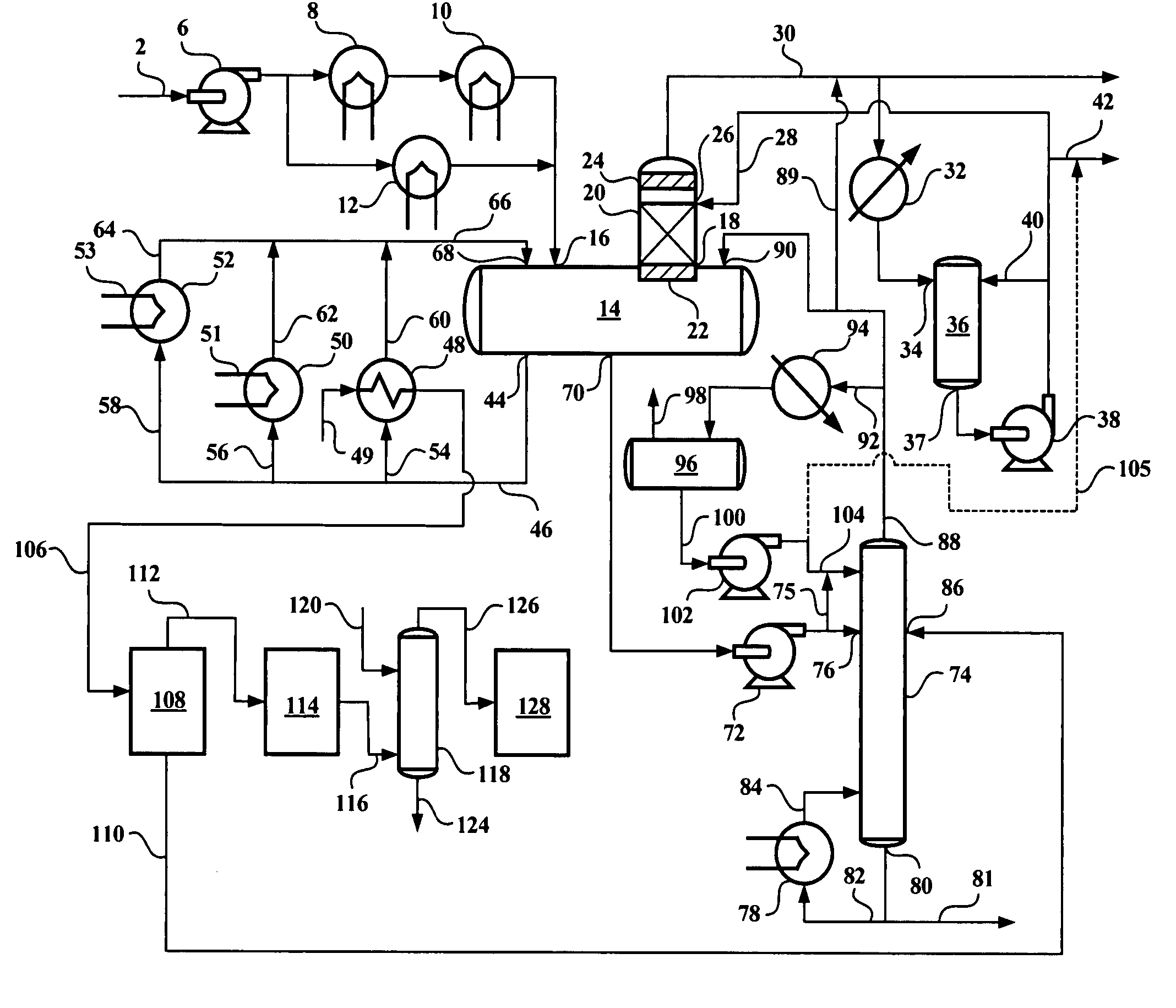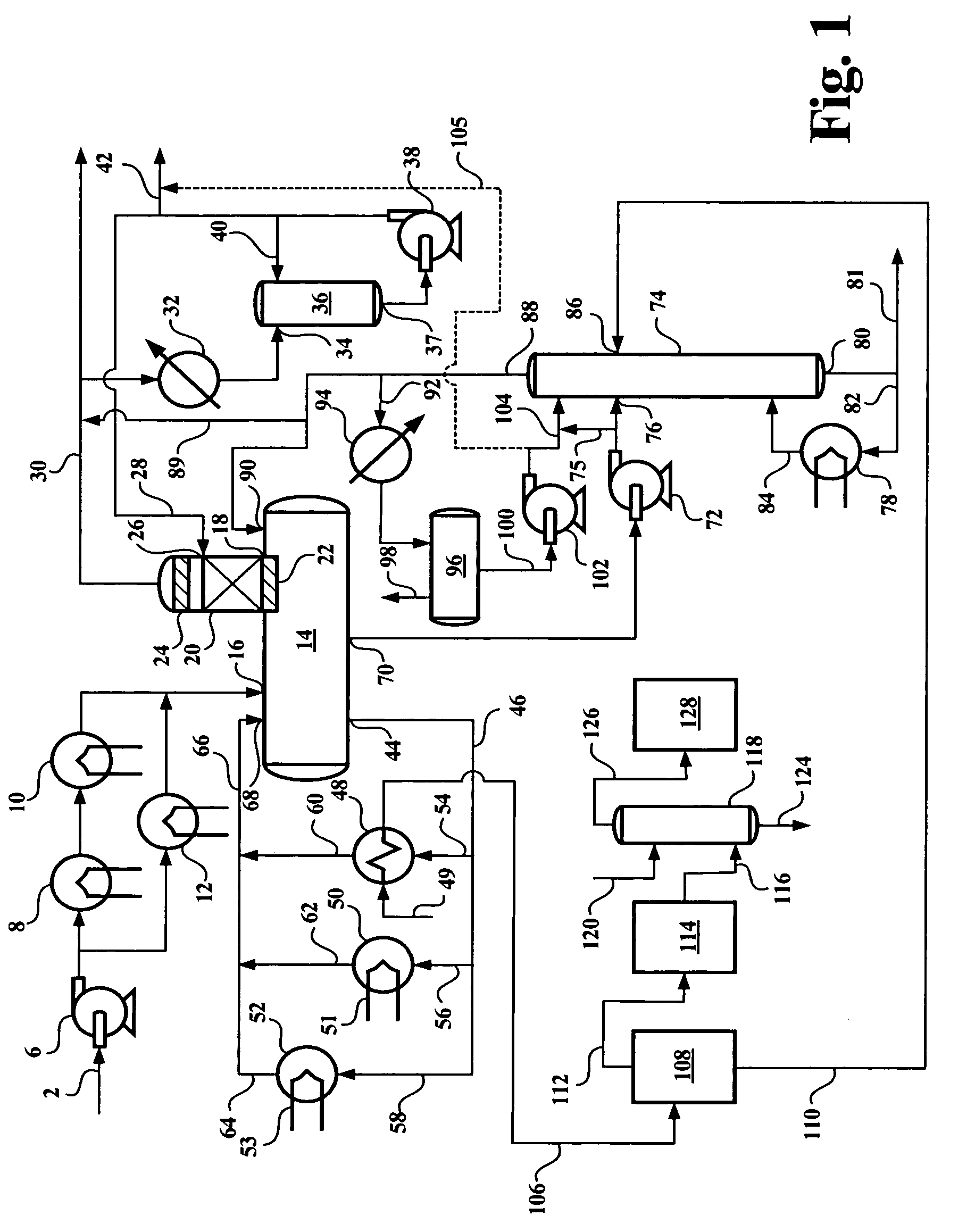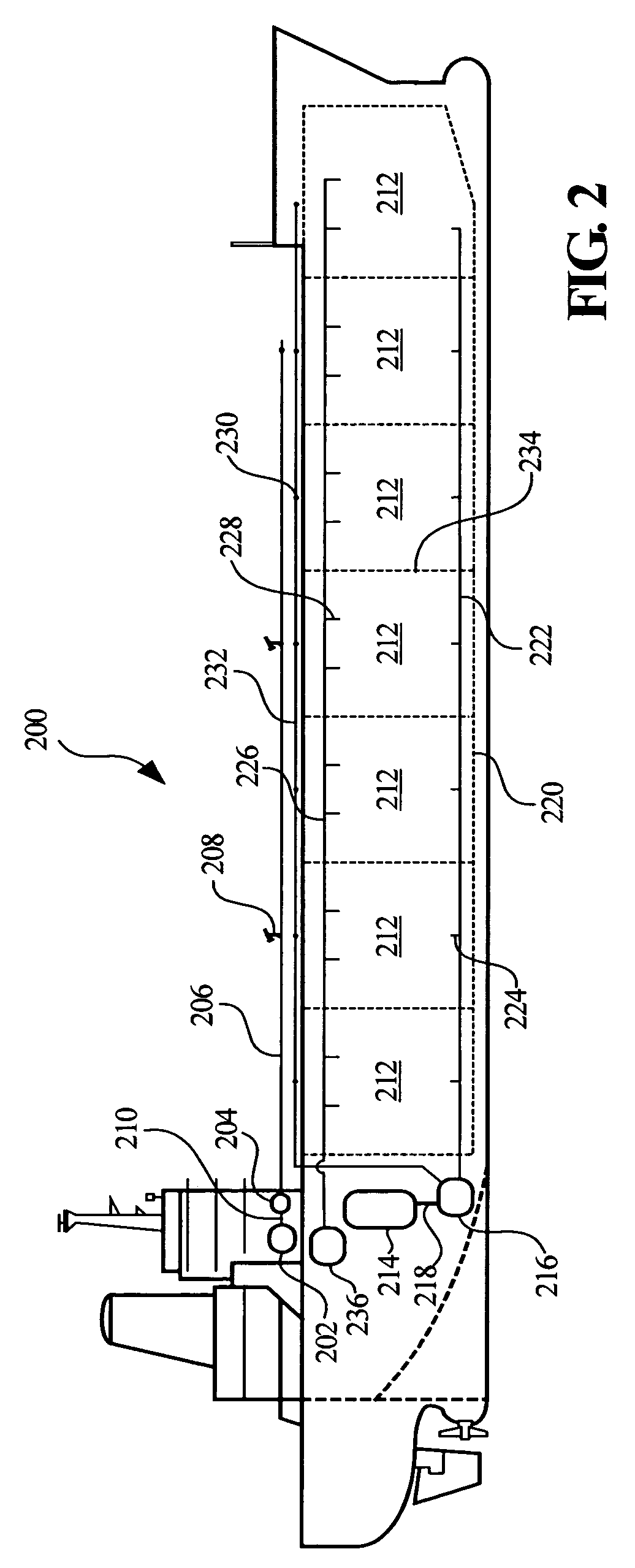Treating oxygenate containing feedstreams in the conversion of oxygenates to olefins
a technology of oxygenate and feedstream, which is applied in the direction of organic chemistry, hydrocarbon preparation catalysts, chemistry apparatus and processes, etc., can solve the problems of limited opportunities to produce low-cost light olefins from petroleum feeds, and achieve the reduction of catalyst deactivation rate, efficient heat utilization, and long-term selectivity.
- Summary
- Abstract
- Description
- Claims
- Application Information
AI Technical Summary
Benefits of technology
Problems solved by technology
Method used
Image
Examples
Embodiment Construction
I. Removal of Contaminants from Reaction Process
[0025]This invention provides for a significant reduction of contaminant materials in an oxygenate stream. Such a stream is particularly beneficial when used as a feedstream in the conversion of the oxygenates in the feedstream to olefin products, particularly ethylene and propylene products. Such contaminants include a variety of non-volatile, as well as partially volatile, compounds that act to reduce catalyst life or selectivity to the desired product, particularly ethylene and propylene content in the product.
[0026]The processes of the invention are particularly directed to reaction systems that incorporate the use of metalloaluminophosphate molecular sieves to convert the oxygenates in the feed to olefins. Of particular interest in the invention is the removal of contaminants from oxygenate streams comprising methanol as the major component.
[0027]It has now been found that even the more highly pure forms of oxygenates available at...
PUM
| Property | Measurement | Unit |
|---|---|---|
| temperature | aaaaa | aaaaa |
| temperature | aaaaa | aaaaa |
| temperature | aaaaa | aaaaa |
Abstract
Description
Claims
Application Information
 Login to View More
Login to View More - R&D
- Intellectual Property
- Life Sciences
- Materials
- Tech Scout
- Unparalleled Data Quality
- Higher Quality Content
- 60% Fewer Hallucinations
Browse by: Latest US Patents, China's latest patents, Technical Efficacy Thesaurus, Application Domain, Technology Topic, Popular Technical Reports.
© 2025 PatSnap. All rights reserved.Legal|Privacy policy|Modern Slavery Act Transparency Statement|Sitemap|About US| Contact US: help@patsnap.com



